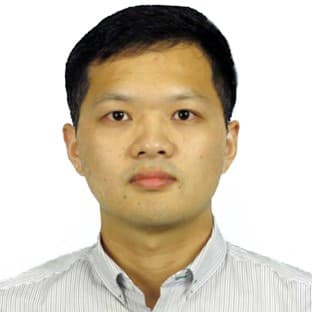Optical 3D Sensing Systems
A special issue of Photonics (ISSN 2304-6732).
Deadline for manuscript submissions: closed (16 May 2022) | Viewed by 23078
Special Issue Editors
Interests: optical metrology; 3D imaging; computer vision; structured light; phase retrieval
Special Issues, Collections and Topics in MDPI journals
Interests: superfast 3D optical sensing; multi-scale 3D optical metrology; machine/computer vision; in-situ manufacturing inspection and quality control
Special Issues, Collections and Topics in MDPI journals
Interests: machine vision; optical measurement; smart agriculture
Special Issues, Collections and Topics in MDPI journals
Special Issue Information
Dear colleagues,
Optical 3D sensing that acquires surface geometry information without physically touching the measured objects plays an increasingly critical role in numerous fields such as industry, agriculture, medicine, entertainment, and so on. Advances in electronic sensors, computational power and deep learning have greatly promoted the development of optical 3D sensing techniques. This special issue focuses on optical 3D sensing techniques and their applications. Various 3D sensing systems based on technologies such as structured light, stereo vision, time-of-flight (TOF) and others have been developed by many researchers. Unique hardware and software are also designed to realize the high-speed, accurate, compact, convenient, and intelligent sensing systems. The topics of this special issue includes but not limited to: novel and advanced optical systems, information processing methods and interesting applications of optical 3D sensing.
Prof. Dr. Yajun Wang
Prof. Dr. Beiwen Li
Prof. Dr. Yuwei Wang
Guest Editors
Manuscript Submission Information
Manuscripts should be submitted online at www.mdpi.com by registering and logging in to this website. Once you are registered, click here to go to the submission form. Manuscripts can be submitted until the deadline. All submissions that pass pre-check are peer-reviewed. Accepted papers will be published continuously in the journal (as soon as accepted) and will be listed together on the special issue website. Research articles, review articles as well as short communications are invited. For planned papers, a title and short abstract (about 100 words) can be sent to the Editorial Office for announcement on this website.
Submitted manuscripts should not have been published previously, nor be under consideration for publication elsewhere (except conference proceedings papers). All manuscripts are thoroughly refereed through a single-blind peer-review process. A guide for authors and other relevant information for submission of manuscripts is available on the Instructions for Authors page. Photonics is an international peer-reviewed open access monthly journal published by MDPI.
Please visit the Instructions for Authors page before submitting a manuscript. The Article Processing Charge (APC) for publication in this open access journal is 2400 CHF (Swiss Francs). Submitted papers should be well formatted and use good English. Authors may use MDPI's English editing service prior to publication or during author revisions.
Keywords
- optical metrology
- 3D shape measurement
- surface characterization
- photomechanics testing
- fringe analysis
- vision calibration
- phase retrieval
- point cloud processing
- image processing
- deep learning







